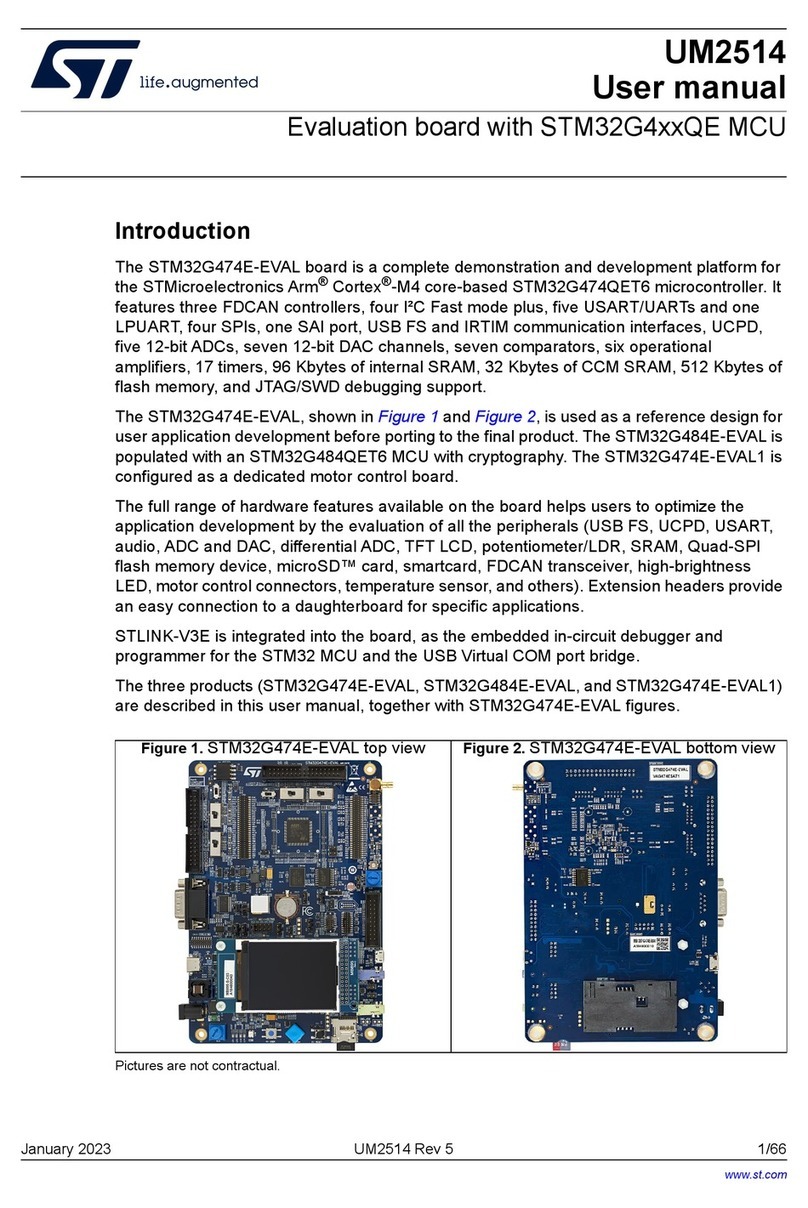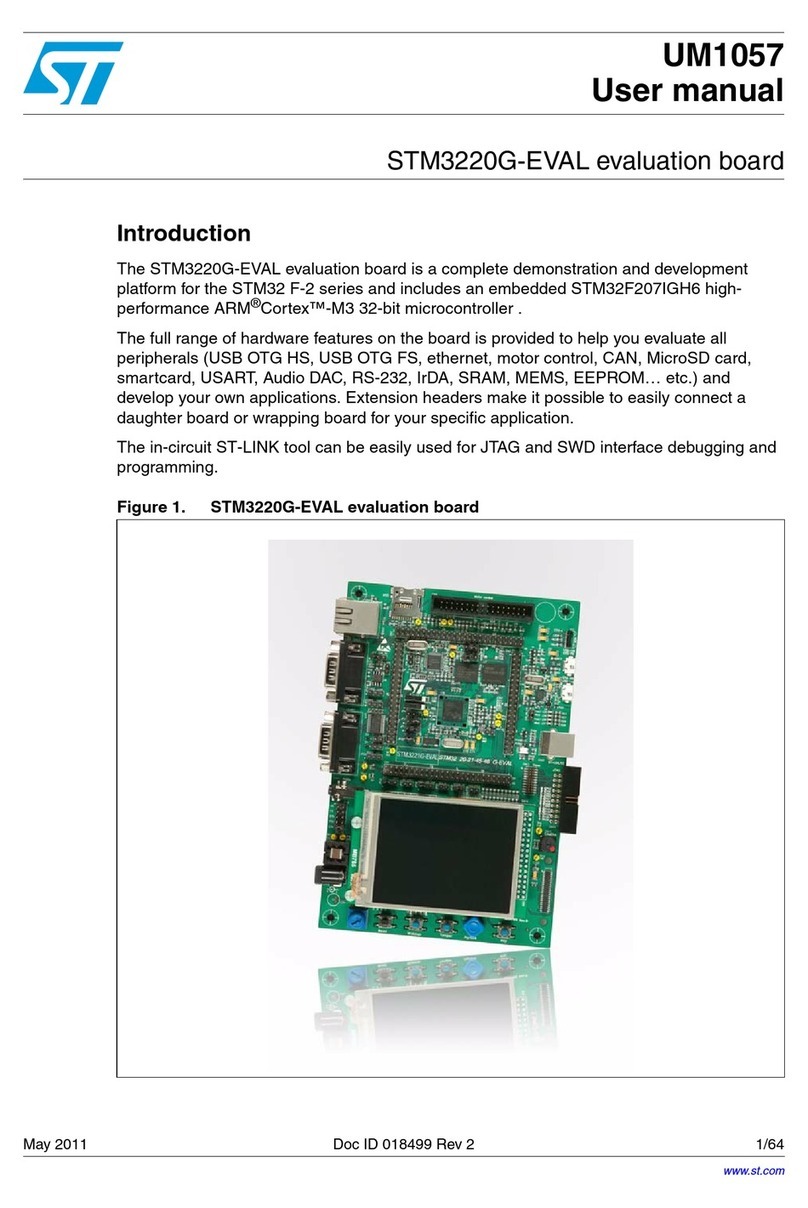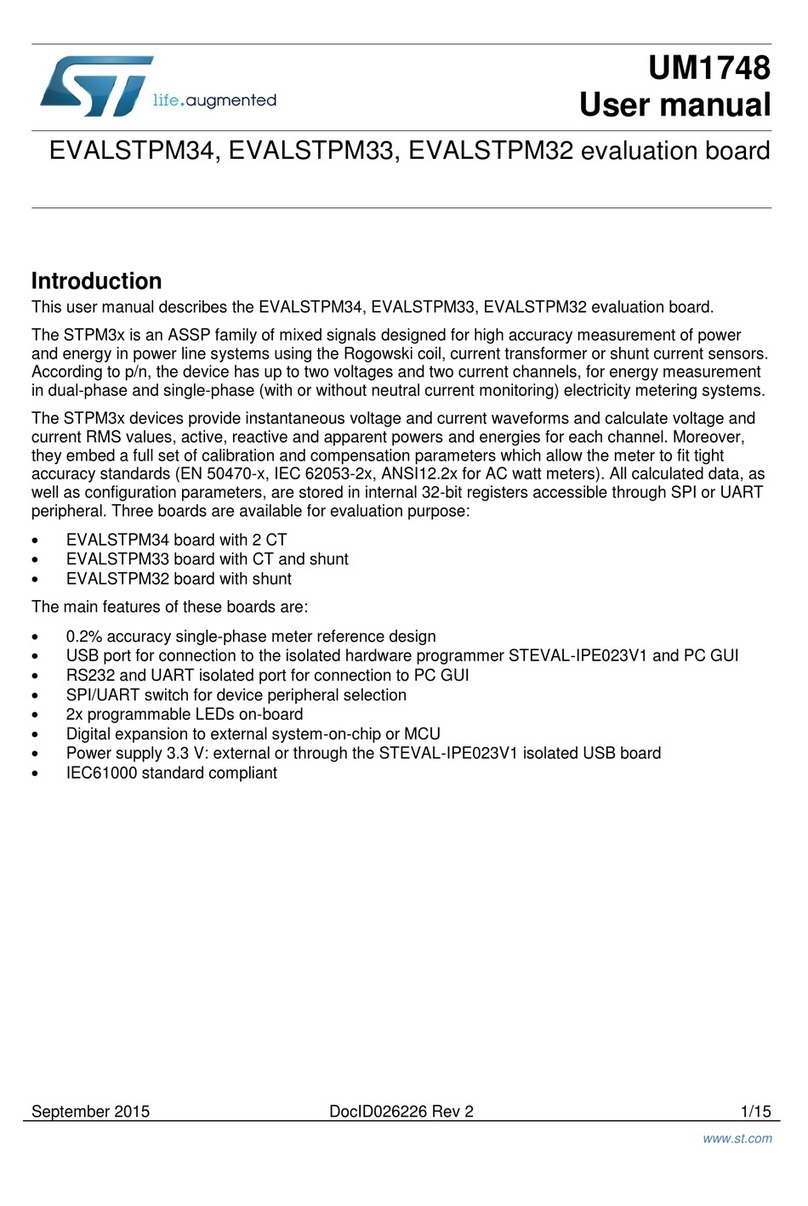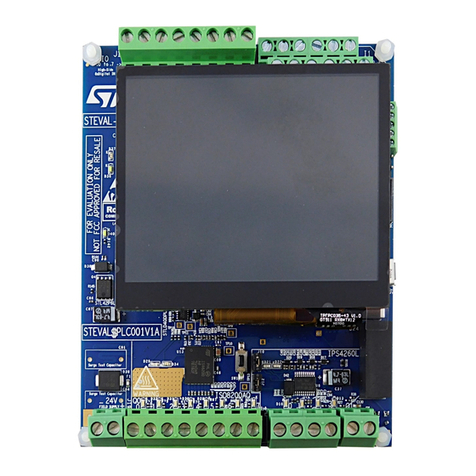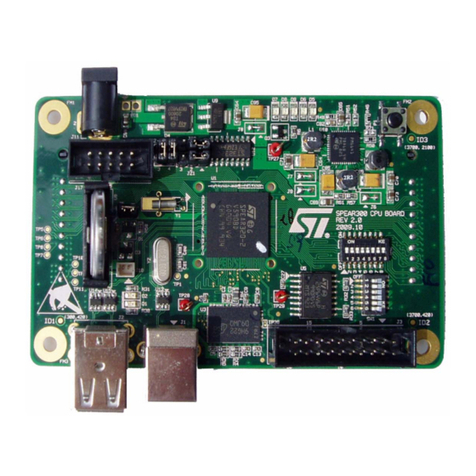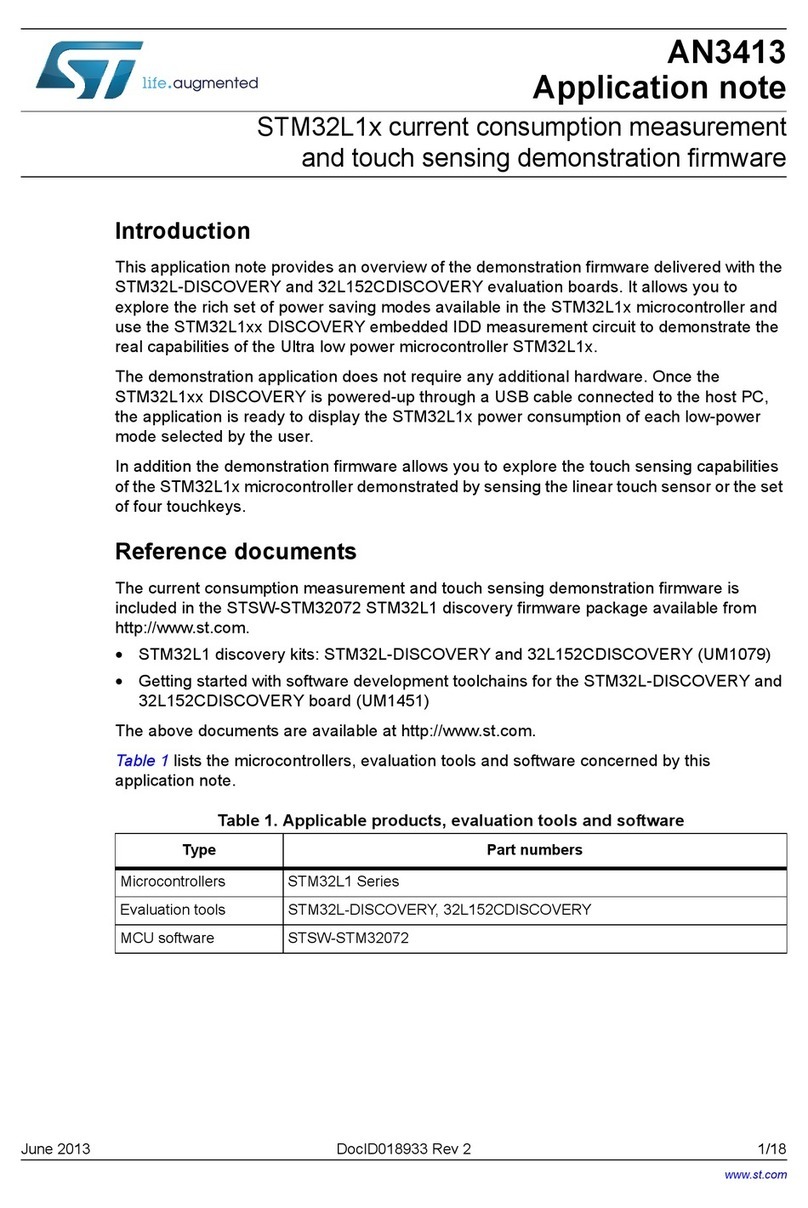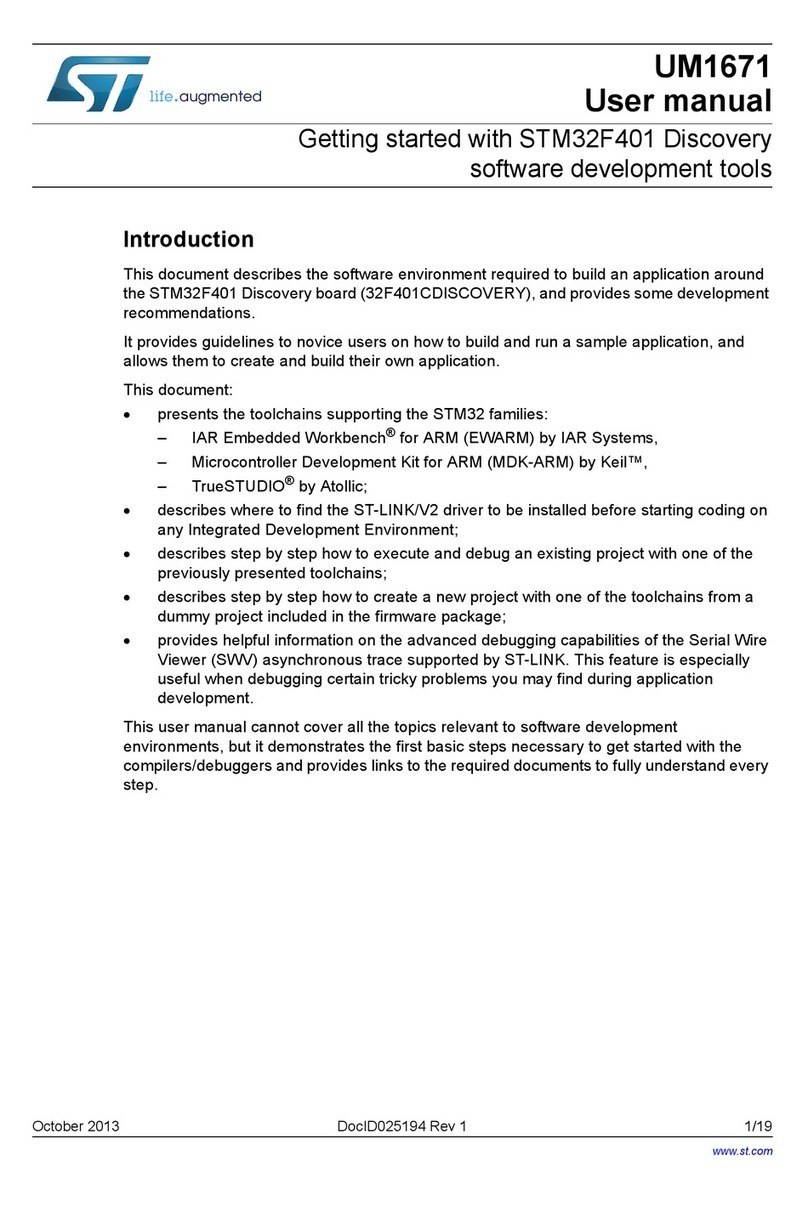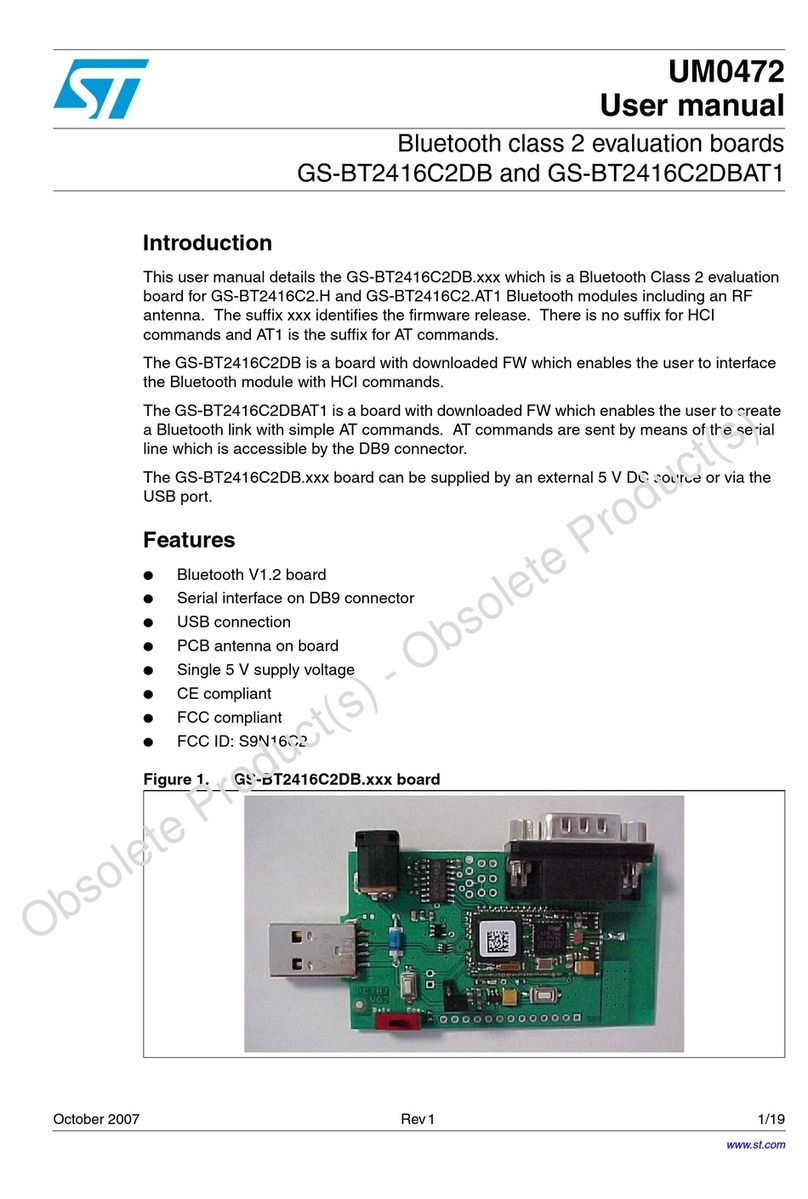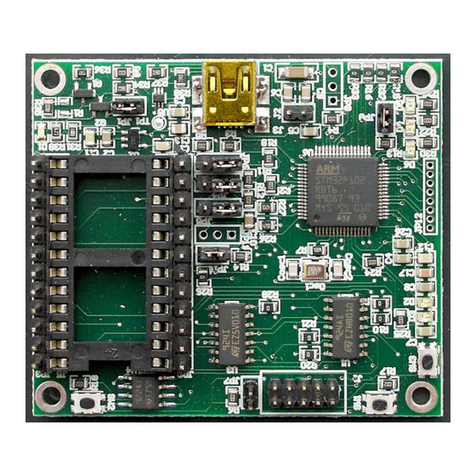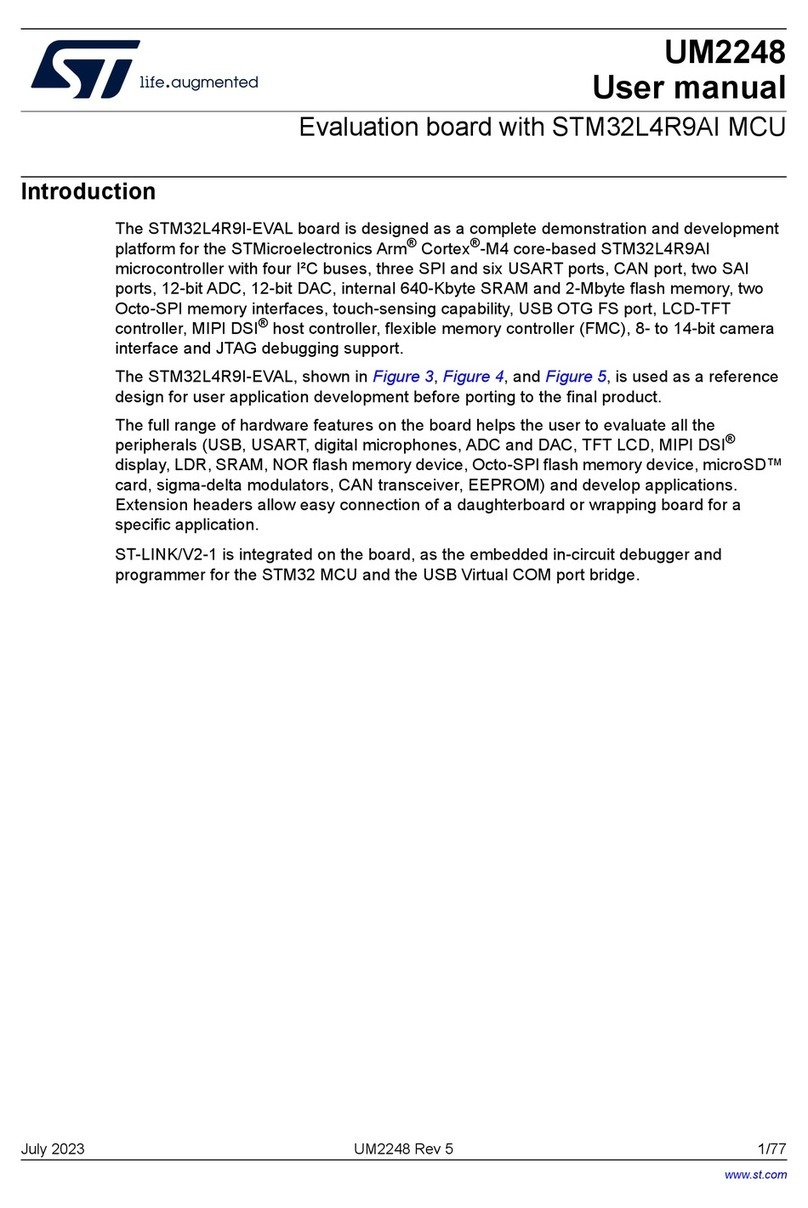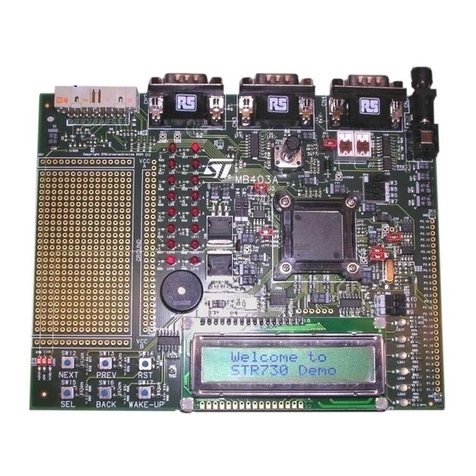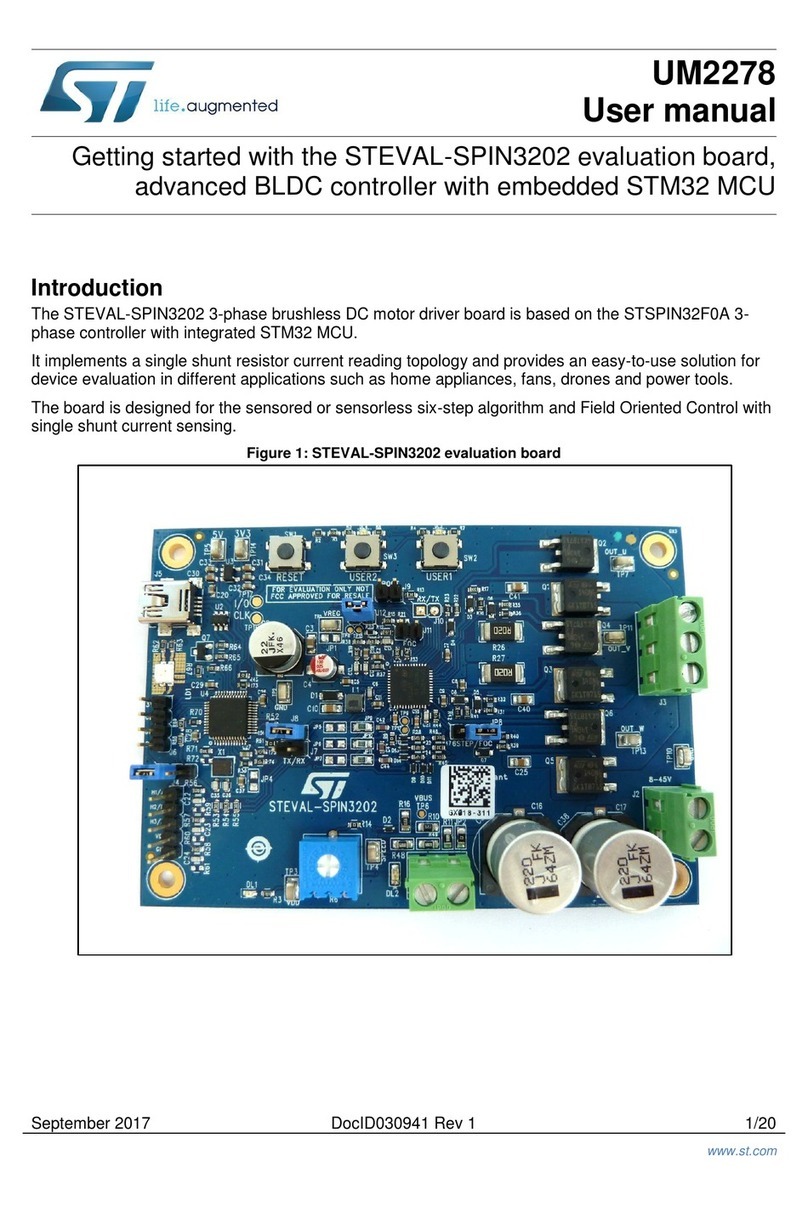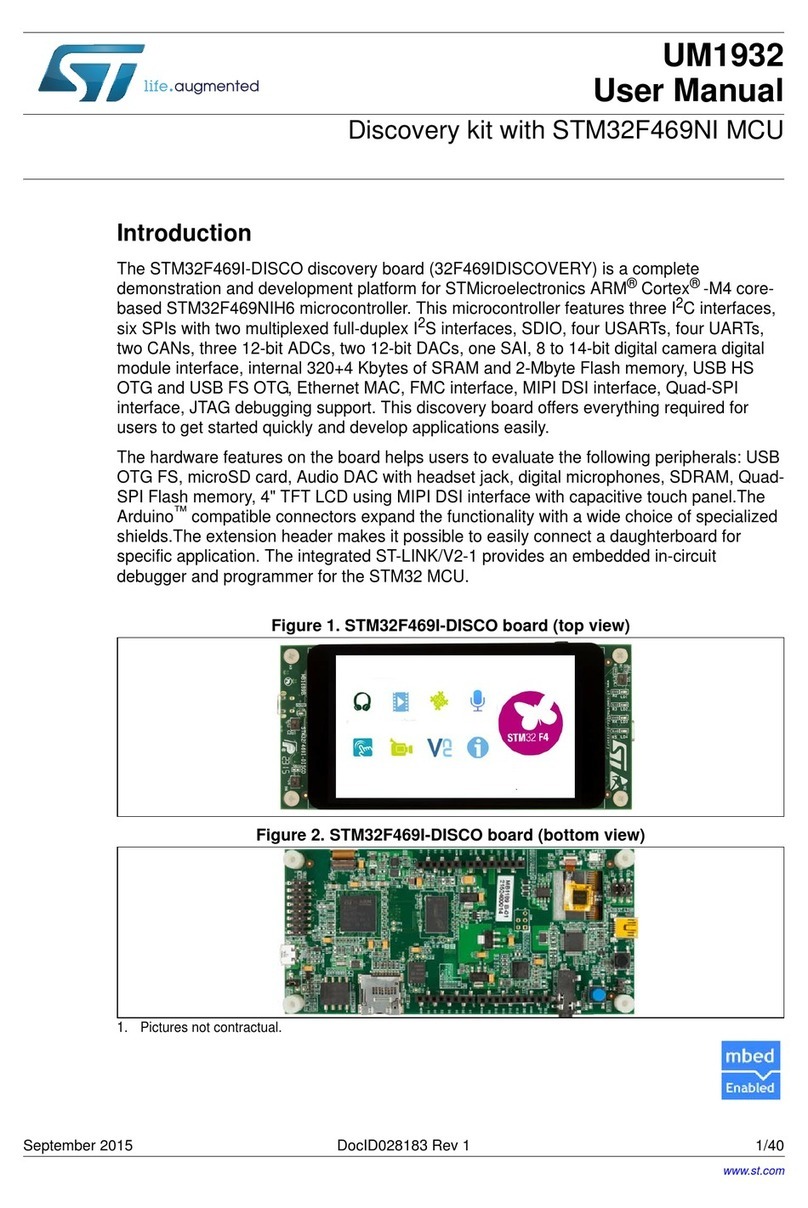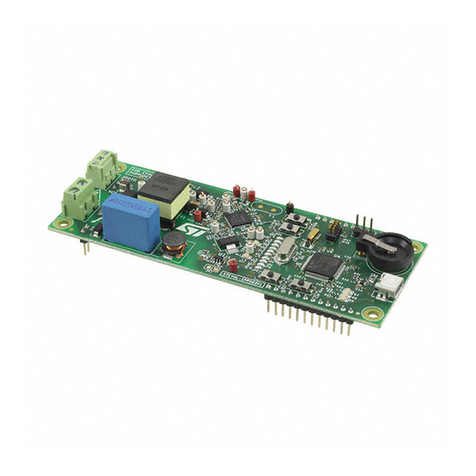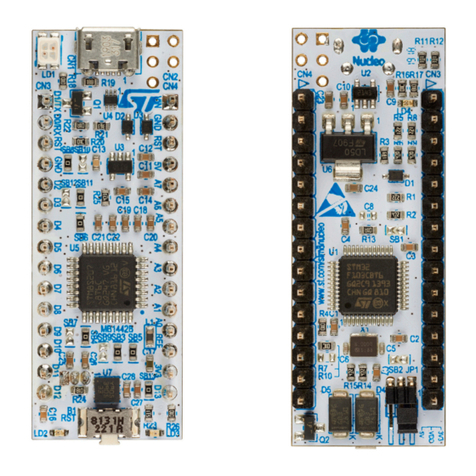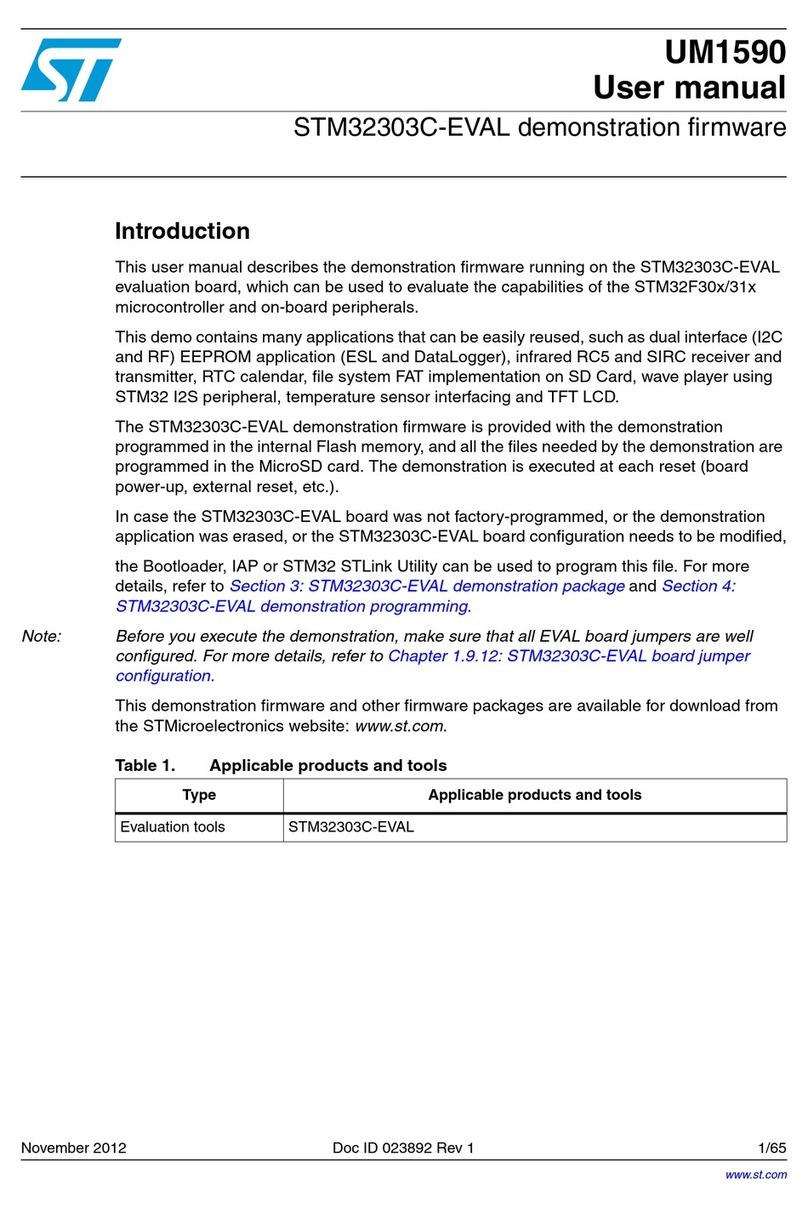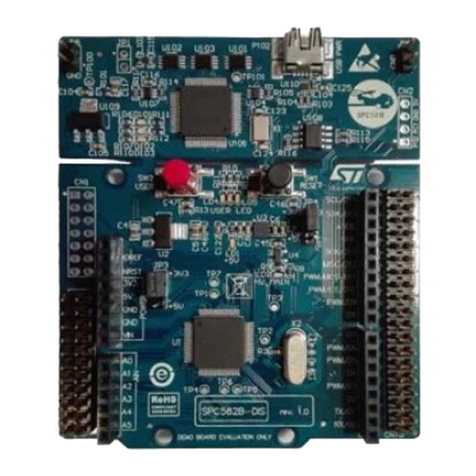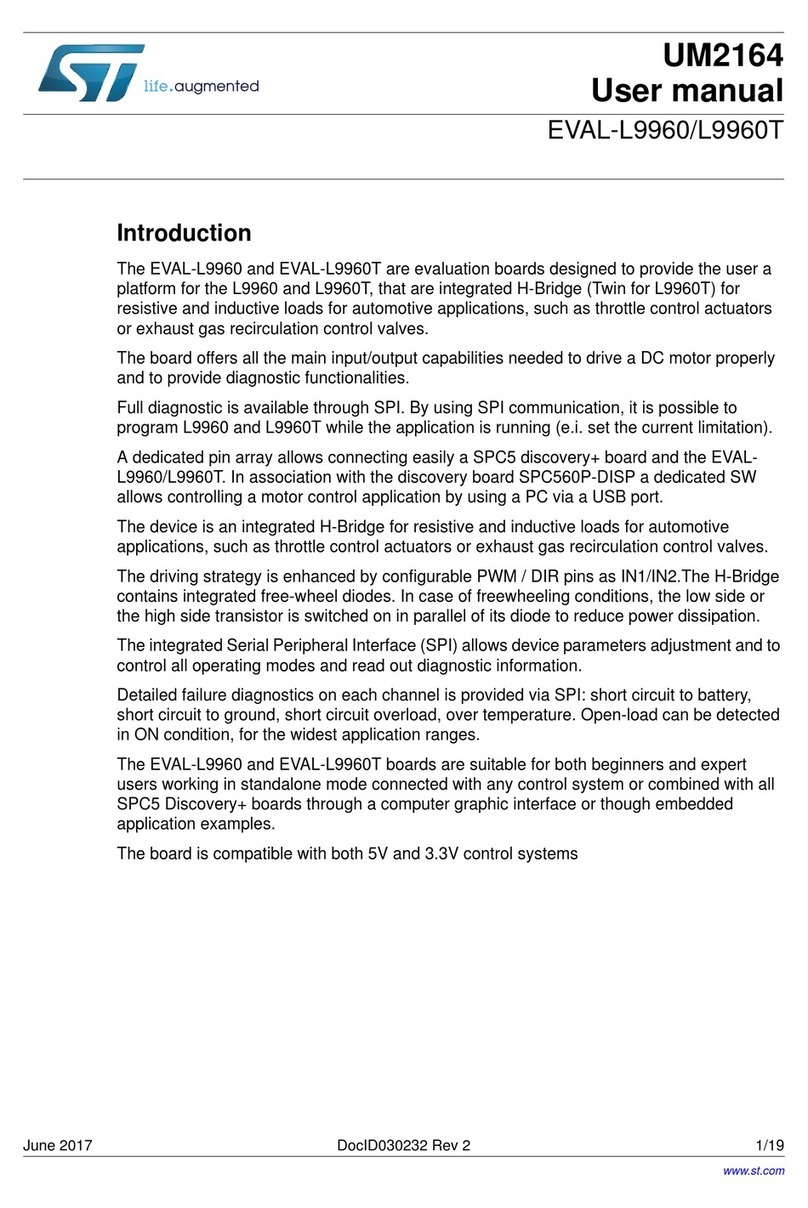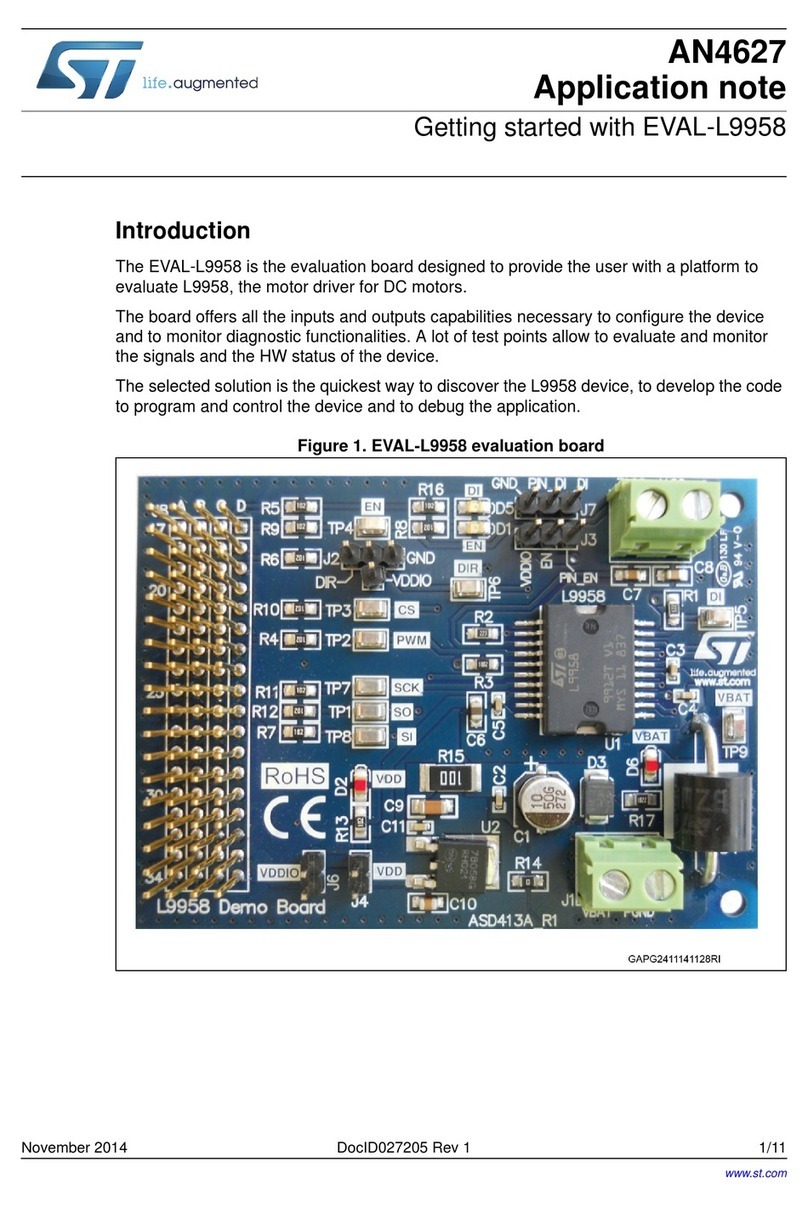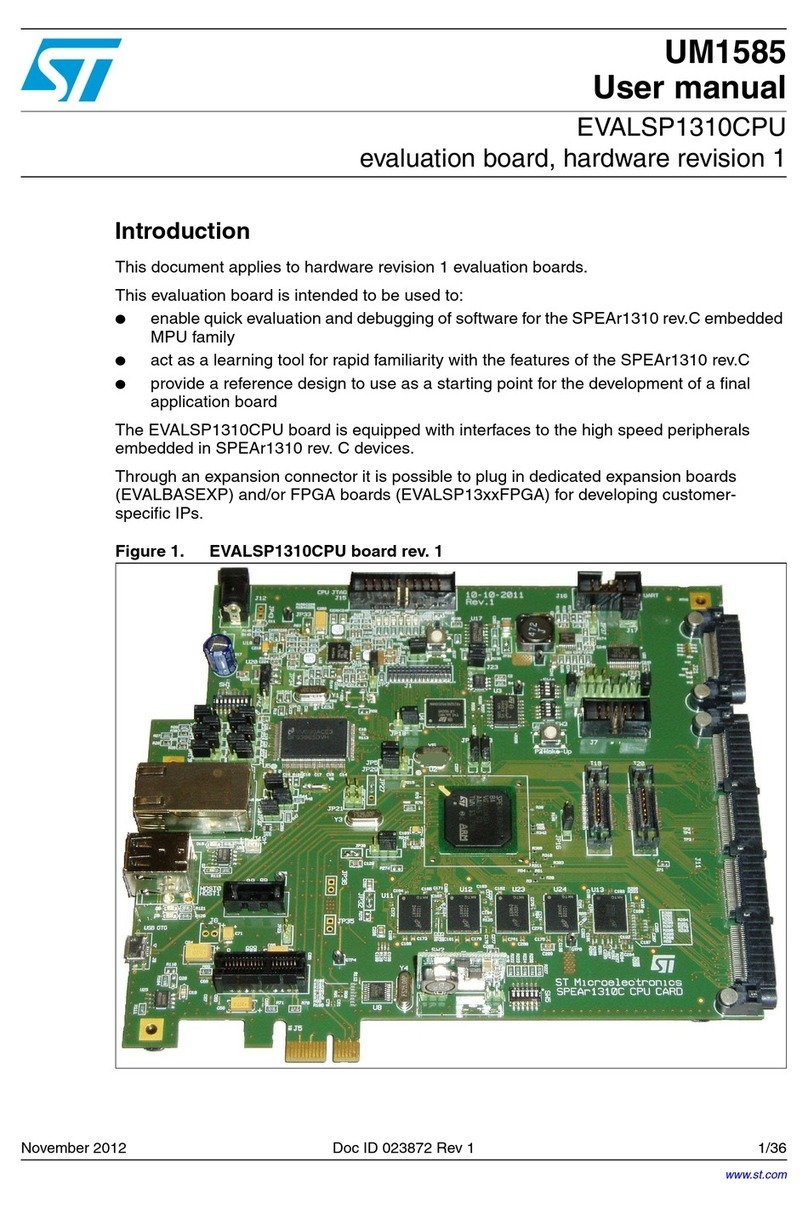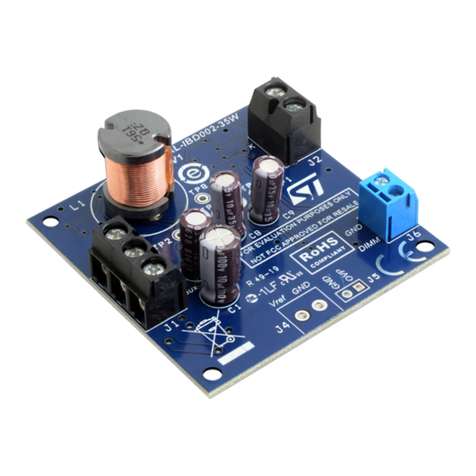
List of tables UM2248
6/72 UM2248 Rev 4
List of tables
Table 1. Ordering information . . . . . . . . . . . . . . . . . . . . . . . . . . . . . . . . . . . . . . . . . . . . . . . . . . . . . . . 9
Table 2. Codification explanation . . . . . . . . . . . . . . . . . . . . . . . . . . . . . . . . . . . . . . . . . . . . . . . . . . . . 9
Table 3. Setting of configuration elements for CN12 trace connector . . . . . . . . . . . . . . . . . . . . . . . 19
Table 4. Power supply related jumpers settings . . . . . . . . . . . . . . . . . . . . . . . . . . . . . . . . . . . . . . . . 21
Table 5. X1 crystal related solder bridge settings . . . . . . . . . . . . . . . . . . . . . . . . . . . . . . . . . . . . . . . 22
Table 6. X2 crystal related solder bridge settings . . . . . . . . . . . . . . . . . . . . . . . . . . . . . . . . . . . . . . . 23
Table 7. Boot selection switch . . . . . . . . . . . . . . . . . . . . . . . . . . . . . . . . . . . . . . . . . . . . . . . . . . . . . 24
Table 8. Digital microphone-related jumper settings . . . . . . . . . . . . . . . . . . . . . . . . . . . . . . . . . . . . 25
Table 9. Motor-control terminal and function assignment . . . . . . . . . . . . . . . . . . . . . . . . . . . . . . . . . 28
Table 10. CAN related jumpers . . . . . . . . . . . . . . . . . . . . . . . . . . . . . . . . . . . . . . . . . . . . . . . . . . . . . 33
Table 11. Port assignment for control of physical input devices . . . . . . . . . . . . . . . . . . . . . . . . . . . . . 35
Table 12. Configuration elements related to OpAmp1 . . . . . . . . . . . . . . . . . . . . . . . . . . . . . . . . . . . . 36
Table 13. Configuration elements related to Comp2 . . . . . . . . . . . . . . . . . . . . . . . . . . . . . . . . . . . . . 36
Table 14. SRAM chip select configuration . . . . . . . . . . . . . . . . . . . . . . . . . . . . . . . . . . . . . . . . . . . . . 38
Table 15. NOR Flash memory-related jumper . . . . . . . . . . . . . . . . . . . . . . . . . . . . . . . . . . . . . . . . . . 38
Table 16. Configuration elements related to Octo-SPI Flash device . . . . . . . . . . . . . . . . . . . . . . . . . 39
Table 17. Touch-sensing-related configuration elements. . . . . . . . . . . . . . . . . . . . . . . . . . . . . . . . . . 41
Table 18. MFX signals . . . . . . . . . . . . . . . . . . . . . . . . . . . . . . . . . . . . . . . . . . . . . . . . . . . . . . . . . . . . 42
Table 19. IDD measurement related jumper setting . . . . . . . . . . . . . . . . . . . . . . . . . . . . . . . . . . . . . . 43
Table 20. CN16 DSI display module connector . . . . . . . . . . . . . . . . . . . . . . . . . . . . . . . . . . . . . . . . . 44
Table 21. CN20 TFT LCD module connector . . . . . . . . . . . . . . . . . . . . . . . . . . . . . . . . . . . . . . . . . . . 45
Table 22. P1 PMOD connector . . . . . . . . . . . . . . . . . . . . . . . . . . . . . . . . . . . . . . . . . . . . . . . . . . . . . . 46
Table 23. Pin function description of the CN1 MB1314 board connector . . . . . . . . . . . . . . . . . . . . . . 46
Table 24. Pin function description of the CN1 MB1315 board connector . . . . . . . . . . . . . . . . . . . . . . 48
Table 25. CN1 motor-control connector . . . . . . . . . . . . . . . . . . . . . . . . . . . . . . . . . . . . . . . . . . . . . . . 49
Table 26. CN2 EXT_I2C connector . . . . . . . . . . . . . . . . . . . . . . . . . . . . . . . . . . . . . . . . . . . . . . . . . . 50
Table 27. CN3 USB OTG FS Micro-AB connector . . . . . . . . . . . . . . . . . . . . . . . . . . . . . . . . . . . . . . . 50
Table 28. CN4 analog input-output connector . . . . . . . . . . . . . . . . . . . . . . . . . . . . . . . . . . . . . . . . . . 51
Table 29. CN5 daughterboard extension connector . . . . . . . . . . . . . . . . . . . . . . . . . . . . . . . . . . . . . . 51
Table 30. CN6 daughterboard extension connector . . . . . . . . . . . . . . . . . . . . . . . . . . . . . . . . . . . . . . 52
Table 31. CN13 daughterboard extension connector . . . . . . . . . . . . . . . . . . . . . . . . . . . . . . . . . . . . . 54
Table 32. CN14 daughterboard extension connector . . . . . . . . . . . . . . . . . . . . . . . . . . . . . . . . . . . . . 55
Table 33. RS232 D-sub male connector. . . . . . . . . . . . . . . . . . . . . . . . . . . . . . . . . . . . . . . . . . . . . . . 57
Table 34. CN8 microSD™ connector . . . . . . . . . . . . . . . . . . . . . . . . . . . . . . . . . . . . . . . . . . . . . . . . . 58
Table 35. CN11 STDC14 debugging connector . . . . . . . . . . . . . . . . . . . . . . . . . . . . . . . . . . . . . . . . . 58
Table 36. CN12 trace debugging connector . . . . . . . . . . . . . . . . . . . . . . . . . . . . . . . . . . . . . . . . . . . . 59
Table 37. CN15 TAG debugging connector . . . . . . . . . . . . . . . . . . . . . . . . . . . . . . . . . . . . . . . . . . . . 59
Table 38. CN17 JTAG/SWD debugging connector . . . . . . . . . . . . . . . . . . . . . . . . . . . . . . . . . . . . . . 60
Table 39. CN21 USB Micro-B connector (front view) . . . . . . . . . . . . . . . . . . . . . . . . . . . . . . . . . . . . . 61
Table 40. CN22 CAN D-type 9-pin male connector . . . . . . . . . . . . . . . . . . . . . . . . . . . . . . . . . . . . . . 62
Table 41. STM32L4R9I-EVAL I/O assignment . . . . . . . . . . . . . . . . . . . . . . . . . . . . . . . . . . . . . . . . . . 63
Table 42. Document revision history . . . . . . . . . . . . . . . . . . . . . . . . . . . . . . . . . . . . . . . . . . . . . . . . . 71
